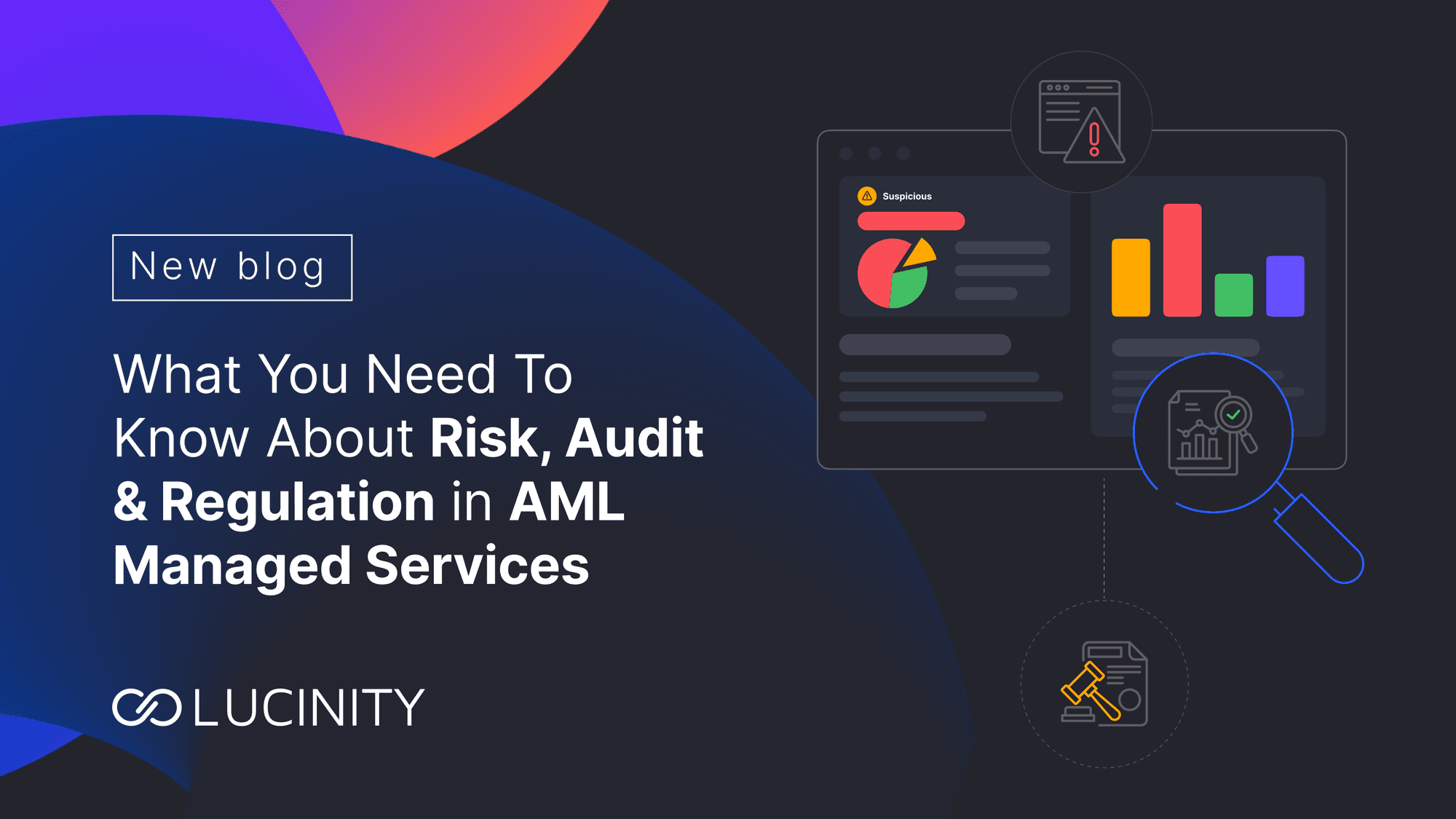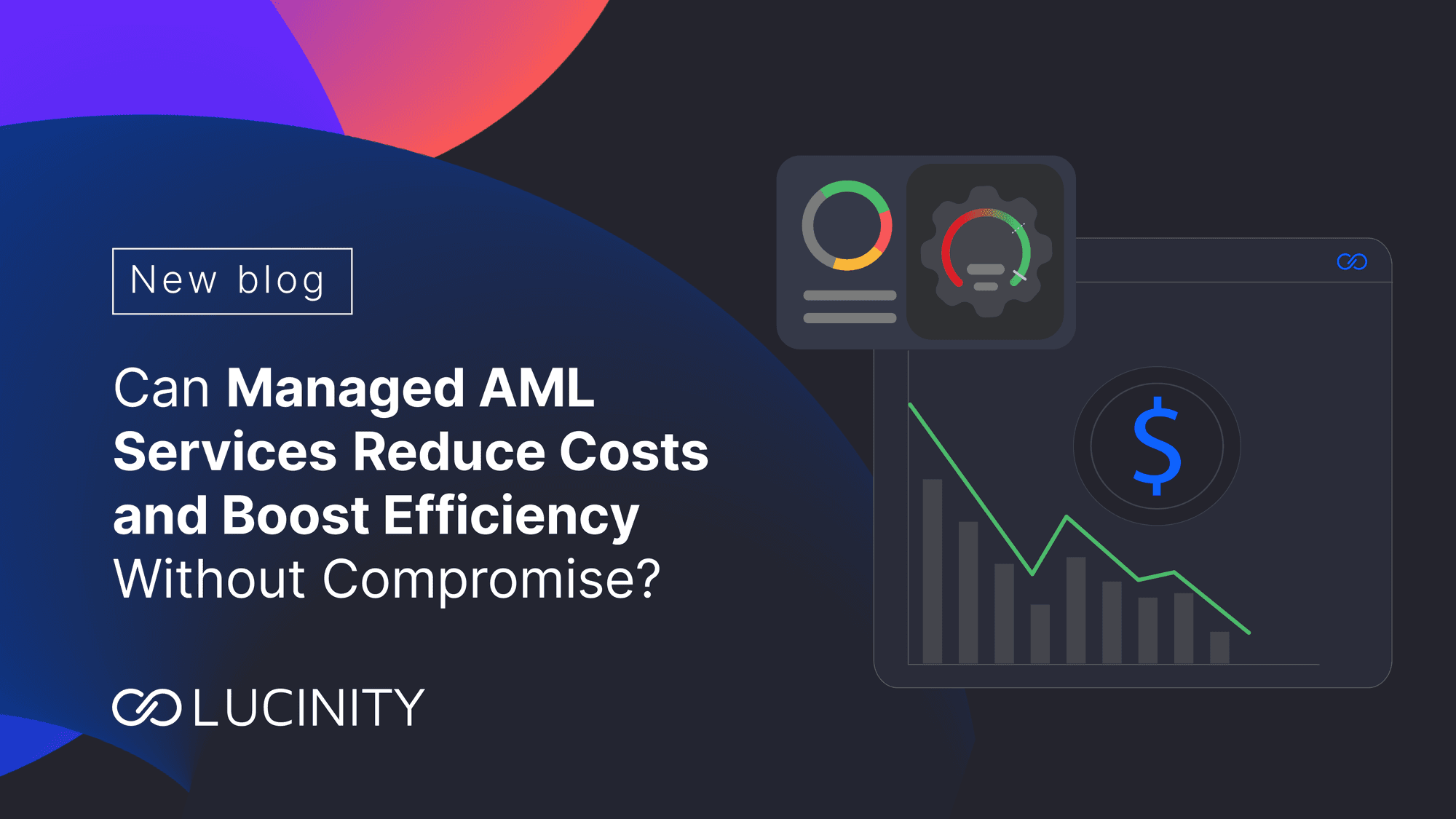In their own words: AML in the real world
Actual AML professionals explain why it’s so hard to shine light on financial crime, in their own words.
Giving a voice to those who fight
Lucinity’s mission to Make Money Good means empowering compliance professionals to be more efficient and productive in their critical job of investigating money laundering.
Sadly, the legacy AML tools still in widespread use today are often not a match for financial criminals. Why? Because the manual labor involved in processing just a simple case, let alone investigating a larger organization, is staggering.
We decided to start this series, and let actual AML professionals explain why it’s so hard to shine light on financial crime, in their own words.
From an AML analyst in the United States:
Data and tool fragmentation is probably my biggest gripe and my largest time consumer, in any place I've worked. It’s hard to combat sophisticated money laundering operations when there are a dozen of separate tools,and searches, required:
- the initial case information, which includes the relevant alert and customer focus, is in the 1st tool (of course the relevant alert and such are all on different pages);
- basic customer info (e.g. address, SSN, list of account numbers and opening dates, etc.) in a 2nd tool;
- KYC, while in the same tool, requires a different search;
- bank statements in a 3rd tool;
- non-statemented transactions in a 4th tool;
- transaction history in a 5th tool, which we have to export, and then paste into Excel to sort, filter and analyze;
- transaction history that includes account transfers is in a 6th tool (we need both histories on every case, same multi-step export/excel process as the other);
- signature cards in a 7th tool;
- scanned checks in an 8th tool,which we have to search one-by-one– absolutely abysmal when there are a lot of them.he transaction history includes some of this information, but often has missing or incorrect data;
- cash transactions (bill denominations, exact time, etc.) in a 9th tool;
- case history search in a 10th tool.
And then we have other tools to use on occasion, such as a separate tool for credit card statements, another for certain cash transactions, etc. At least half, if not all, of these should be combined into one tool. Not only for our own sanity, but to be able to improve the results of our efforts. Also, not only do these tools work separately, if we try to open a second scanned check, it closes the first window. To view both at the same time, we have to save them as PDF and view them in Adobe Acrobat.
This manual, tedious process exposes us to more human error as we try to navigate through fragmented data, and also prevents us from seeing the bigger picture. Money launderers often evade detection because we simply can’t recognize larger patterns. In an ideal world, an AML tool should have a main page that shows all basic customer information (e.g. address, SSN, KYC, a list of accounts, etc.) and also the case and alert history (along with top-sheet data such as date closed/filed) so we can open it quickly.
From this main page, opening an account would take us to a list of statements as well as a transaction history for that account. Even better if one could select, or even input, multiple accounts to view at once. We need to connect and investigate multiple customers at once, and it’d help to see a broad transaction history sorted by date and time. For checks, we should be able to open transactions in the history, which would pull up data. For cash transactions, it should show a breakdown of the denominations.
And we have all the data, it’s just the tools that can’t keep up. These improvements, one by one, are little things on their own. But combined, they could add up to quite a lot, and save a lot of wasted time. Things that are standard everywhere else in technology, like an "Open in new window" button, are completely missing from our current toolset. Or a simple "Back to customer" button or similar, because right now the only way to get back to our original case is to go back to the main generic company page -> go to my cases -> find my case -> and then click on it. Starting over from scratch can take more than 2-3 minutes depending on how slow the systems are on any given day. That may not seem a lot on its own, but adds up quickly given the staggering amount of cases we have to process every day.
These small inefficiencies compound further with customers with multiple prior alerts, cases, or SARs. Having to go back to that very beginning of the workflow to view prior material turns the entire investigation into a loop; you can imagine how long it takes to look at a customer with 10+ alerts, half a dozen prior cases, and 1-2 SARs.
Have your say in the future of AML!
We’ve set out to build the best product possible, based on feedback from real-world investigators. We’re more than interested in your opinion, and what you see as a challenge (be it UX, investigation methodology, or something else) in AML today.
We want to empower compliance professionals, shining light on financial crime in the front lines, not only through our product, but also by giving them a voice.
Get in touch in email, or through our Twitter or LinkedIn, to get yours heard!
----
Cover photo by Disha Sheta from Pexels





